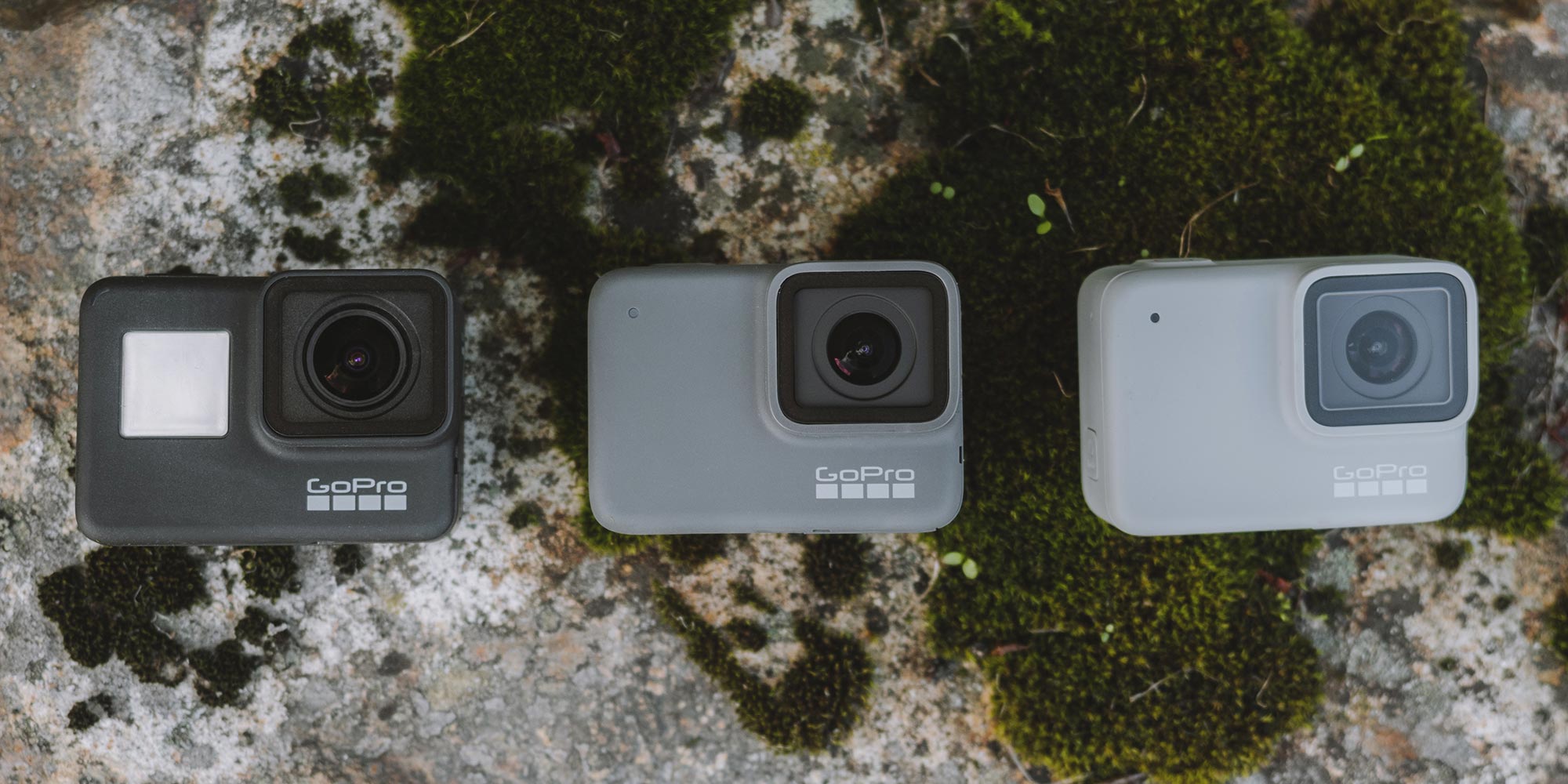GoPro just announced the launch of its new HERO7 cameras, available Sept. 30, and we’re here to help you understand the differences between them. To help prevent customer confusion, GoPro has simplified its lineup by separating the HERO7 line into three distinct cameras:
- HERO7 Black: $400 – High-end, most fully featured
- HERO7 Silver: $300 – Mid-range
- HERO7 White: $200 – Entry-level, lowest price point
We’ll offer a rundown of new features that distinguish HERO7 Black from its most recent predecessor, HERO6 Black, and explain the differences between the three new HERO7 cameras—so if you’re thinking of buying one to shoot high-definition video and photos, you can decide for yourself which features are worth investing in.
To put this piece together, we chatted with the folks at GoPro, along with Travis Burke, professional adventure photographer, master of #VanLife and GoPro ambassador. We snagged Burke shortly after he’d had a chance to test out the new HERO7 Black on a monthlong trip to Indonesia. (We’re not jealous at all.)
In this article, we’ll cover:
- What’s New in HERO7 Black: Standout Features
- Carryover Features
- Why You Might Want a HERO7 Silver or HERO7 White
- The Bottom Line: Which GoPro HERO7 Camera Should I Get?
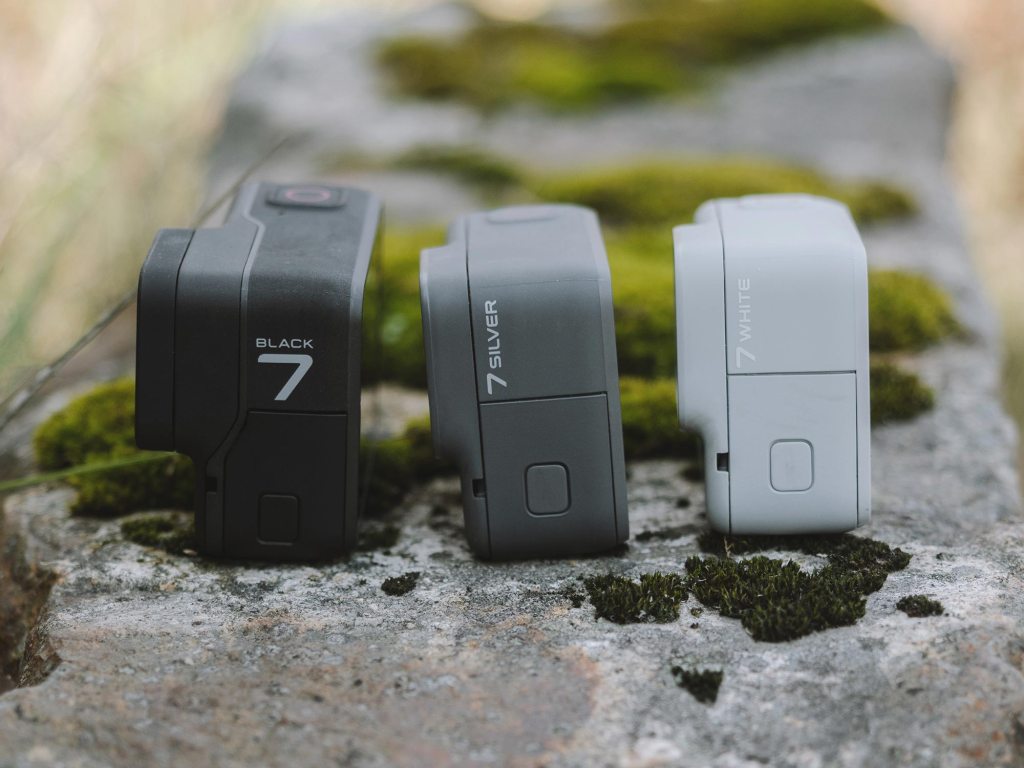
What’s New in HERO7 Black: Standout Features
HyperSmooth Video Stabilization
New feature; Available only on HERO7 Black
Perhaps the most impressive upgrade is HERO7 Black’s new HyperSmooth Stabilization feature—predictive stabilization tech that delivers “gimbal-like video footage”—without the gimbal. For those who have no idea what a gimbal is: It’s an external, pivoting camera stabilizer that can make shaky action footage appear smooth as butter. It’s pretty much a must-have accessory for pro adventure videographers.
Burke brought his trusty gimbal—GoPro’s own proprietary Karma Grip—to Indonesia, but wound up never using it, because he was able to get the performance he needed with HERO7 Black’s 3-axis, internal stabilization, which proactively corrects for shakes, bumps and vibrations using a GP1 chip and 2GB SDRAM. (Keep in mind that HERO3 and HERO4 cameras feature no built-in video stabilization, so even though HERO7 Silver and HERO7 White don’t have a GP1 chip or 2GB SDRAM, their impressive, 3-axis stabilization still dramatically outshines many older HERO models.)
“This makes such a huge difference, especially if you love to travel,” says Burke. “An external stabilizer is another thing to carry around in your luggage and worry about charging.”
The Karma Grip isn’t a cheap accessory either—it retails for $300—so it’s a big deal that the incredibly smooth footage that was once only possible with a $700 setup (HERO6 Black plus a Karma Grip) is now available for only $400 in HERO7 Black.
Want to see what this looks like in action? Check out this side-by-side footage of GoPro HERO6 footage, sans gimbal, and HERO7 HyperSmooth footage.
SuperPhoto HDR Mode
New feature; Available only on HERO7 Black
Also new and exclusive to HERO7 Black is SuperPhoto. This optional mode intelligently enhances your photos by automatically choosing and applying one of four modes: High Dynamic Range (HDR), local tone mapping, multi-frame noise reduction or no processing. You can also set SuperPhoto to HDR-only, which takes three shots in rapid succession, the stitches them into a single image with optimized colors.
“Landscapes are where this mode really shines,” says Burke. “When you’re shooting still images, it captures such a full, dynamic range of color and textures.”
Burke notes that this mode is not well-suited for action shots or capturing fast motion. (It is a good reminder, though, that GoPro cameras don’t just shoot video; they’re also highly capable cameras for good, old-fashioned still shots.)
TimeWarp Video
New feature; Available only on HERO7 Black
This feature lets you capture stabilized time-lapse videos in a format that’s easy to navigate. The in-camera settings do the math for you; you decide on an interval rate based on what length video you want to create. There’s a range of 5 options—starting with 2x speed (1 minute of recording to create a 30-second time-lapse video), all the way up to 30x (5 minutes of recording create a 10-second video).
Burke says this is an especially fun feature to use on moving things like rafts or mountain bikes; you can mount your GoPro, start recording with TimeWarp, and wind up with a quick, beautiful and impressively stable video of an otherwise long trip.
Live Streaming
New feature; Available only on HERO7 Black
As with many of the new features, GoPro has made an obvious effort here to be focused on making it as easy as possible to offload and share your camera content on social media or other platforms. This particular feature lets you stream video content straight to Facebook Live from your GoPro.
Vertical Shooting
New feature; Available on HERO7 Black, Silver and White
Vertical shooting is now built into all three cameras, so there’s no need to re-orient horizontal footage manually for your Snapchat or Instagram stories. You can also share directly to your Instagram story from the GoPro app, eliminating the need to exit and open Instagram to do it.
“This is huge for me,” says Burke. “I’ll shoot a lot of vertical videos for Instagram stories. Previously I had to use an outside app between shooting on GoPro and posting it to Instagram; it was an annoying extra step. Now the process is simple.”

Brinkley Davies, a surfer, marine biologist and member of the GoPro family, walks along a dead tree in Mirror Lake near Derawan Islands, Indonesia. (Photo Credit: Travis Burke Photography)
Photo Timer
New feature; Available on HERO7 Black, Silver and White
It’s not exactly a standout feature in the broader camera world, but longtime GoPro users will appreciate the fact that all cameras in HERO7 line now come with a built-in photo timer (3-second or 10-second). It’s the first time GoPro has put a timer on a HERO camera. No more hacks or workarounds on your GoPro to nail those selfies and group shots.
Carryover Features
Despite their price differences, all three HERO7 cameras—Black, Silver and White—have a number of features in common. Many are carryover features that we’ve already seen (and loved) in previous HERO cameras, such as:
- Built-in waterproof protection down to 10m without a housing: Burke says, “I grab my GoPro for quite a bit of everything because I just don’t have to worry about it as much.” Case in point: He lost a $4,000 camera in Indonesia when water leaked through its waterproof housing while shooting underwater footage; his HERO7 Black survived the trip, including several underwater shoots, unscathed.
- LCD touch screen: Unlike past GoPro lines, though, all cameras at every price point in the HERO7 line have this feature.
- Automatic video stabilization: Differs by camera; more detail on the significant upgrades to this in a moment.
- Voice commands: Control your camera hands-free with commands like “GoPro, take a photo” or “GoPro, start recording.”
- Slow-motion, time-lapse video and burst modes
- Wi-Fi capability and compatibility with Bluetooth, GoPro app and QuikStories
- Compatibility with the Supercharger power adapter (sold separately) to charge your GoPro much faster than a standard charger.
- Compatibility with 30+ GoPro mount options (sold separately). And, in case you were wondering, Burke’s favorite mount is the 3-Way Grip: “It’s my go-to for everything—so compact, but I can use it in many different ways.”
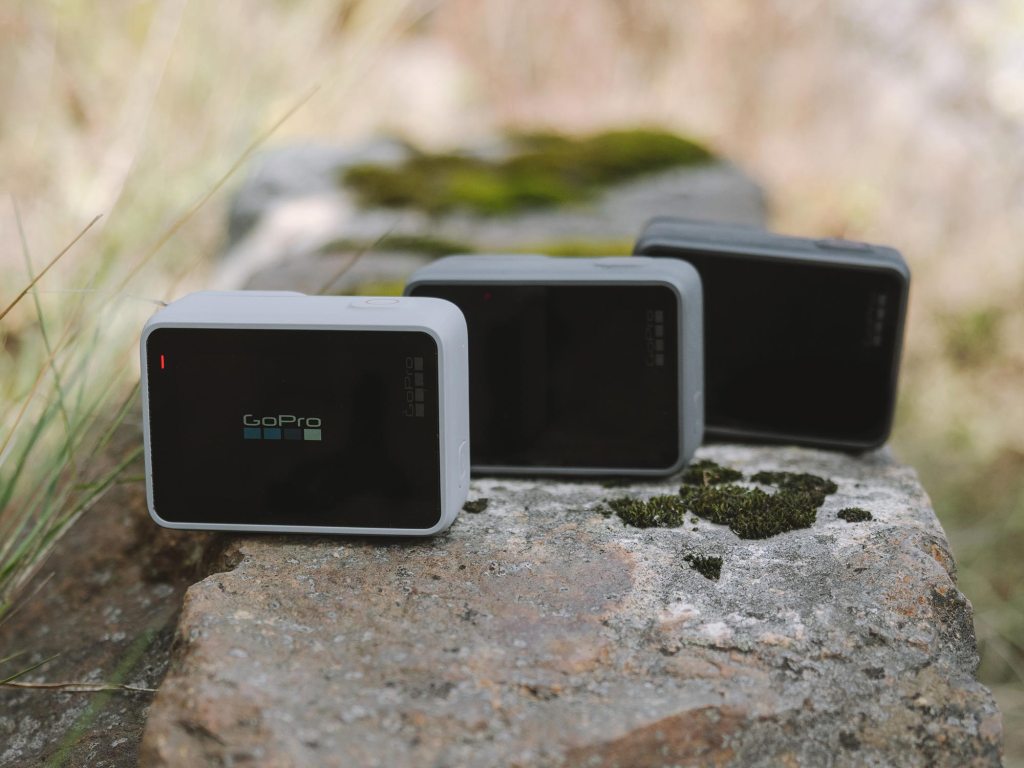
In addition to their shared carryover features, HERO7 Black incorporates some specific aspects of HERO6 Black. Here’s a look at those features and how they compare to HERO7 Silver and White.
Ability to shoot 4K60 video
HERO7 Black carryover feature from HERO6 Black; compare to 4K30 video on HERO7 Silver; 1440p60 on HERO7 White
In video-footage nomenclature, the first number (e.g., 4K, 2.7K, 1440, 1080) refers to the number of pixels (resolution), and the second number (e.g., 30, 60, 240) refers to the frames per seconds.
The resolution of 1080 pixels has traditionally been considered high-definition (HD) footage; “4K” refers to resolution that has literally four times the pixel density as 1080 footage. If you and your computer have the ability to process the massive file sizes that 4K footage produces, it’s a professional video editor’s dream. It’ll let you crop, zoom in or pan without sacrificing HD detail, or more easily grab a high-quality still shot.
For most of the rest of us, it’s probably overkill.
“If you’re just trying to save moments to look back on, 1080p60 [which all three HERO7 cameras are capable of] is perfect,” says Burke. “That’s what I honestly shot most of the time in Indonesia. With the added benefit of HyperSmooth stabilization [HERO7 Black only], it’s the perfect setting for all the travel I did.”
HERO7 Silver’s 4K30 footage is comparable to HERO5 Black’s capabilities. HERO7 White’s 1440p60 footage is comparable to the current HERO.
Removable, replaceable battery
HERO7 Black carryover feature from HERO6 Black; not available on HERO7 Silver/White
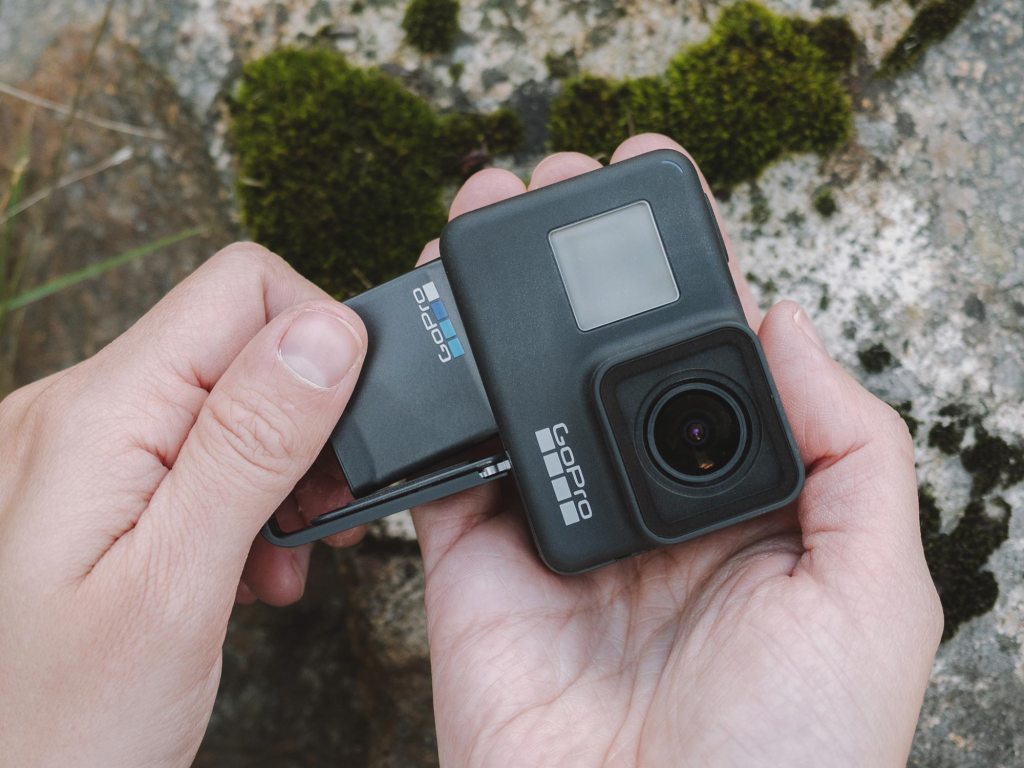
A removable battery lets you carry a few spare batteries for long photo shoots and swap them out as needed if your battery dies—so this is a distinct advantage of HERO7 Black. Unlike past HERO cameras, HERO7 Silver and HERO7 White come with a built-in battery (like most smartphones) that requires recharging once it runs out of juice.

12MP photos
HERO7 Black carryover feature from HERO6 Black; compare to 10MP photos on HERO7 Silver/White
MP refers to “megapixels,” and 10-12MP is fairly standard for digital cameras or many smartphone cameras these days. For the everyday user, the difference between a 10MP and 12MP camera is negligible—especially if you’re primarily sharing photos digitally for viewing on phone, tablet or laptop screens (vs. printing in large format). The 10MP feature is comparable to the current GoPro HERO camera.
Protune
HERO7 Black carryover feature from HERO6 Black; Not available on HERO7 Silver/White
This grants you manual control over many advanced settings like color balance, ISO limits, exposure, shutter speed and image sharpness.
Ability to capture images in RAW format
HERO7 Black carryover feature from HERO6 Black; Not available on HERO7 Silver/White
Unlike JPEG files, which compress images, RAW files record all data when taking an image, which leads to impressive color range and crispness of detail. This is invaluable for professional photographers wanting to do post-production editing on their images. Amateur photographers who don’t mind manually processing their images will also appreciate this capability.
GP1 image-processing chip
HERO7 Black carryover feature from HERO6 Black; not available on HERO7 Silver/White
This chip, which debuted in HERO6 Black, enhances colors and improves low-light performance.
Burst mode of 30 frames/second
HERO7 Black carryover feature from HERO6 Black; compare to 15 frames/second on HERO7 Silver/White
For sharp action shots at high speeds, being able to automatically capture 30 frames in the span of a second is one of Burke’s favorite features: “It lets me capture things with GoPro that I can’t get with my big fancy camera. Thirty frames per second in burst mode is mind-blowing. It lets me capture that specific moment, that half-millisecond capture that I’d otherwise miss.”
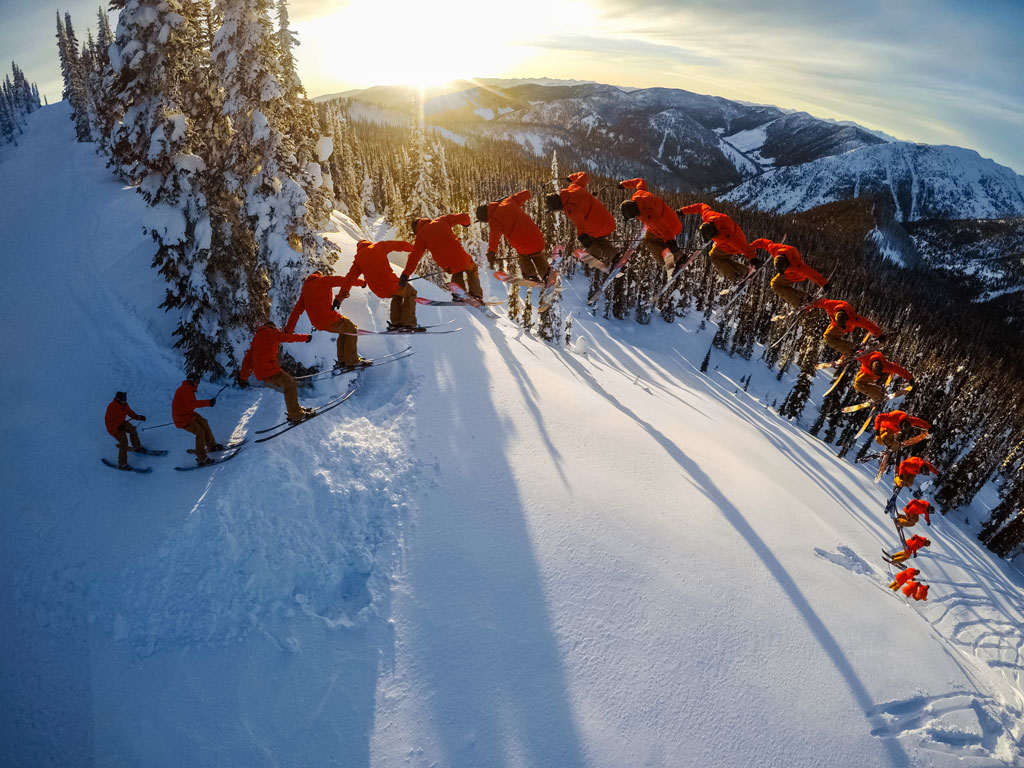
This photo demonstrates what the camera can do in burst mode. It’s important to note that producing an image like this requires some external software, beyond the GoPro app. (Photo Credit: GoPro)
8x Slo-Mo video
HERO7 Black carryover feature from HERO6 Black; compare to 2x Slo-Mo video on HERO7 Silver/White
Sucker for slow-motion footage? All three cameras let you shoot it, but HERO7 Black offers the most flexibility when you want to really slow things down.
GPS
HERO7 Black carryover feature from HERO6 Black; also comes on HERO7 Silver; not available on HERO7 White
Track your speed, distance, altitude, elevation gain and more—and add GPS Performance Stickers to your videos in the GoPro app to show off how fast, far and high you went.
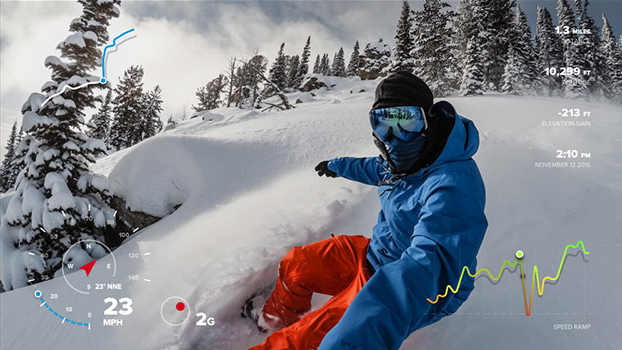
Photo Credit: GoPro
Front LCD Screen
HERO7 Black carryover feature from HERO6 Black; not available on HERO7 Silver/White
The front LCD screen on HERO7 Black makes it easy to keep an eye on your battery life, shooting mode, settings and photo-timer countdown, even if you’re in front of the camera instead of behind it. “If I have it on the front of a surfboard facing me, there’s not a good way to get to the other side. It’s cool to still be able to see if I have battery life, and how long I’ve been recording,” Burke says. All three HERO7 cameras feature a back LCD touch screen.

Why You Might Want a HERO7 Silver or HERO7 White
There’s no point in having—or paying for—all the bells and whistles if you don’t plan to use them. For many folks who just want to take beautiful video and photos and share them digitally, the more budget-friendly HERO7 Silver or HERO7 White cameras are plenty capable.
With these two cameras, GoPro has made an effort to mimic the simple design and intuitive user experience of modern smartphones—so you won’t need to bury your nose in a complex user manual to get started. For example, unlike HERO7 Black, the HERO7 Silver/White interface doesn’t require you to figure out and manually set your resolution and frame-rate settings if you want to shoot slow-motion footage. You can just tap a snail icon on the main screen.
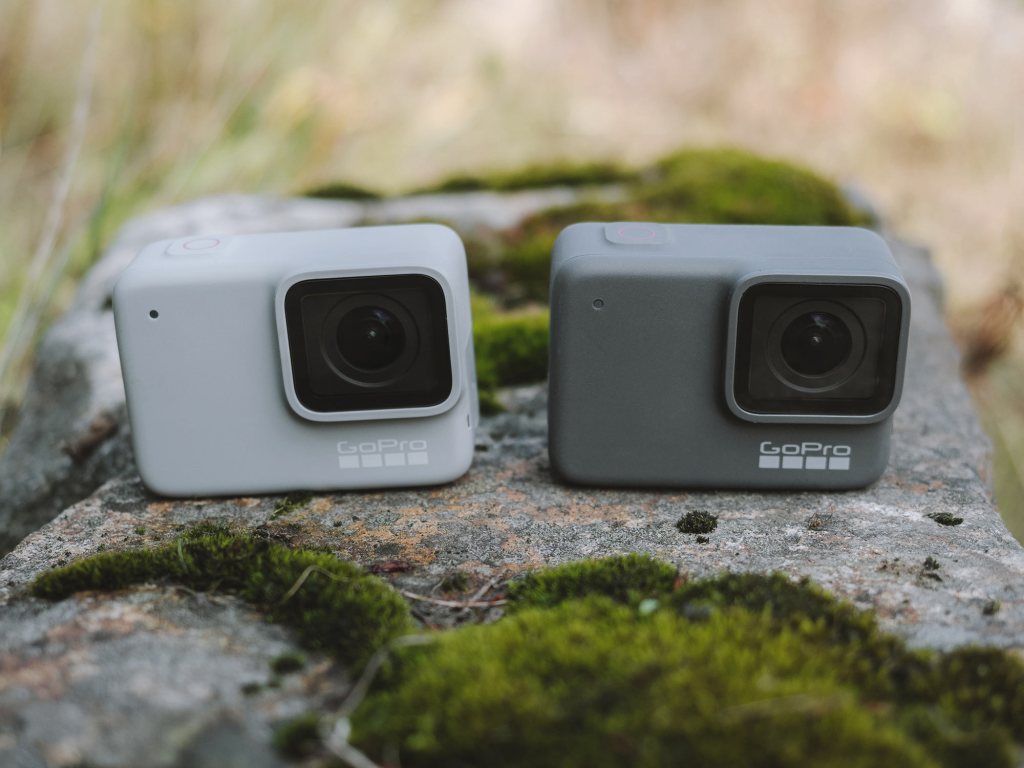
As for the differences between these two, the advantages of HERO7 Silver over HERO7 White are its:
- Ability to shoot ultra-HD 4K footage
- WDR (Wide Dynamic Range) images
- GPS capabilities, including GPS stickers for your videos to show off your speed, distance, altitude, elevation gain and route map
The Bottom Line: Which GoPro HERO7 Camera Should I Get?
Choose GoPro HERO7 Black if you want the most advanced, professional-grade GoPro HERO camera available. If you have ever relied on (or dreamt of using!) an external stabilizer to help you capture non-shaky action footage, the built-in HyperSmooth Stabilization is a game-changer. You also get a wide range of high-end video and still-photo capabilities, including the option to shoot RAW photos, automatically apply intelligent HDR, or stream footage straight to Facebook Live. HERO7 Black is great for travel and long photo shoots, pro-level photography and videography, and for diehard GoPro fans on the hunt for the latest and greatest tech at a killer price point compared to a full DSLR + gimbal setup.
GoPro HERO7 Silver and HERO7 White feature the simplest user experience for quick, easy, high-definition video and stills. These are the cameras for you if you primarily share your captures with friends and family or on social media, and you don’t want to spend a lot of time (or computer bandwidth) editing your work post-production.
They’re slightly slimmer and lighter than HERO7 Black, and very simple and intuitive to use—ideal for those looking to invest in their first GoPro, or for owners of past HERO cameras looking to upgrade—especially HERO3 or HERO4 owners who’ve yet to experience the boons of GoPro’s built-in video stabilization.
HERO7 Silver offers a perfect, middle-of-the-road option for aspiring videographers and photographers, letting you dabble in higher-end capabilities and editing options without blowing your budget.
HERO7 White is the most wallet-friendly choice for those who simply want to be able to capture great photos and videos to share with loved ones.
On Sept. 30, GoPro HERO7 Black and HERO7 Silver will be available in all REI stores and online, and HERO7 White will be available in select stores and online.
